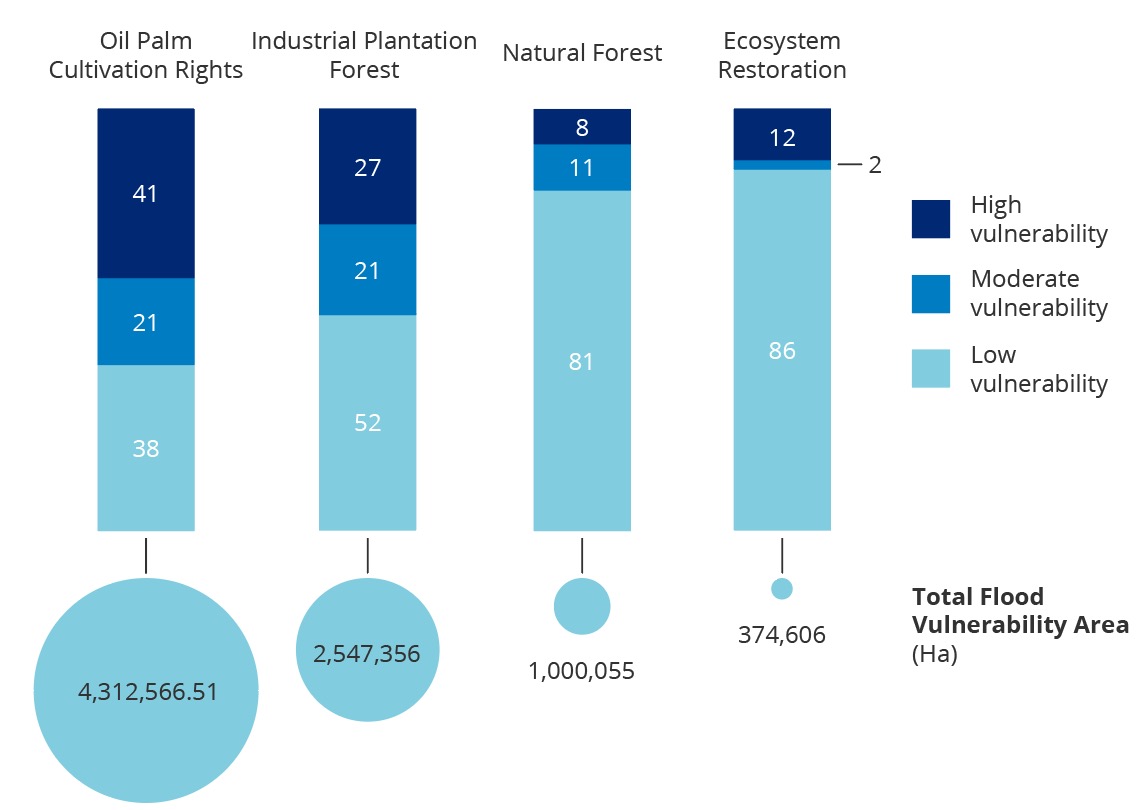Chapter 1: Report After Three Years on The Food Estate Project in Central Kalimantan
By Oriz Anugerah Putra, Desti Ayunda (WRI Indonesia), Agiel Prakoso, Iola AbasFrom Concessions to Consequences Research

Through the launch of its From Concessions to Consequences study, Pantau Gambut revealed the domino effect stemming from a weak regulatory framework, which has allowed plantation corporations to exploit peatland ecosystems without adequate supervision and enforcement.
This follow-up study revealed that 281,253 km of canals have split the peatland ecosystems in the regions of Sumatra, Kalimantan, and Papua. This length of canals, equivalent to 120 round trips on the Trans-Java Toll Road, is mostly found within Right-of-Use Concessions (HGU) and Industrial Timber Plantation (HTI) concessions, covering areas of 3,993,626 Ha and 2,547,356 Ha respectively.
Wahyu Perdana, Pantau Gambut's Advocacy, Campaign, and Communication Manager, explained, "There is a strong correlation between extractive corporate activities and the increased vulnerability to floods and forest and land fires (karhutla)." He pointed out that this is because peat no longer functions as it once did to absorb water. This "irreversible drying" phenomenon causes water to become uncontrolled runoff, which in turn creates a destructive force on the surrounding environment.
Flood Vulnerability Area within Each Concession Type (%)

Wahyu added, "This peatland damage stems from a legal framework for peatland ecosystem protection that is still flawed and leaves major loopholes." He explained that Government Regulation No. 57 of 2016 concerning the Amendment to Government Regulation No. 71 of 2014 did little to change the reality of peatland management and protection and was, in fact, further weakened by Article 110 A and B of the Omnibus Law.
Take for example PT Bumi Andalas Permai (BAP), PT SBA Wood Industries, and PT Bumi Mekar Hijau, which were defendants in a forest and land fire (karhutla) smoke case in South Sumatra Province. Despite repeated trials, the South Sumatra District Court was unwilling to proceed with the lawsuit and instead issued a niet ontvankelijke (NO) ruling, which means postponing or even nullifying the legal process for communities directly affected by these companies' activities.
These three companies, all located in a single Sugihan–Lumpur Peatland Hydrological Unit (KHG), serve as an example of how the damage to the peatland ecosystem from corporate activities cannot fully receive legal protection. Without preventive legal enforcement (rather than repressive enforcement after a disaster has occurred), communities will continue to be the victims.



